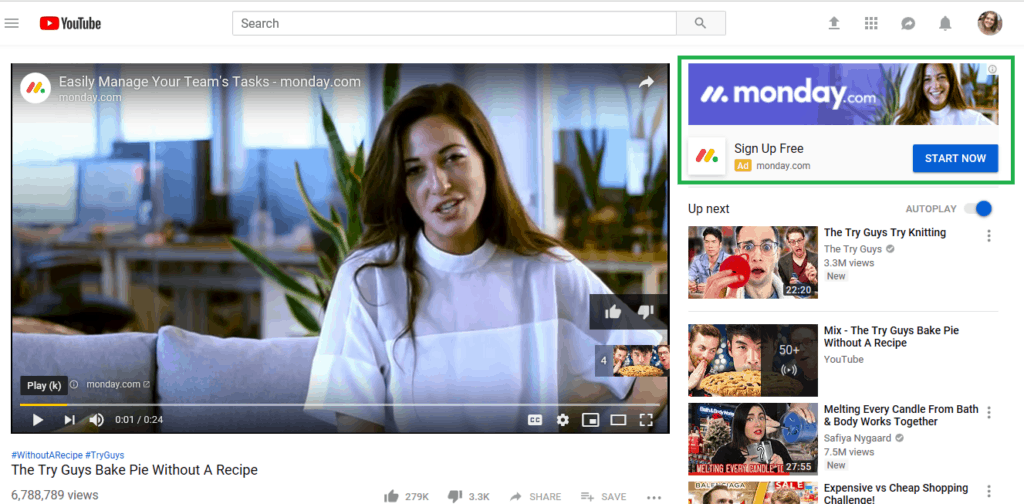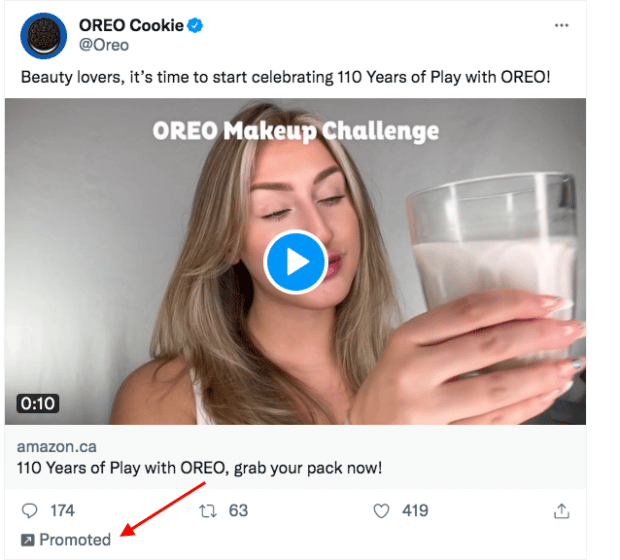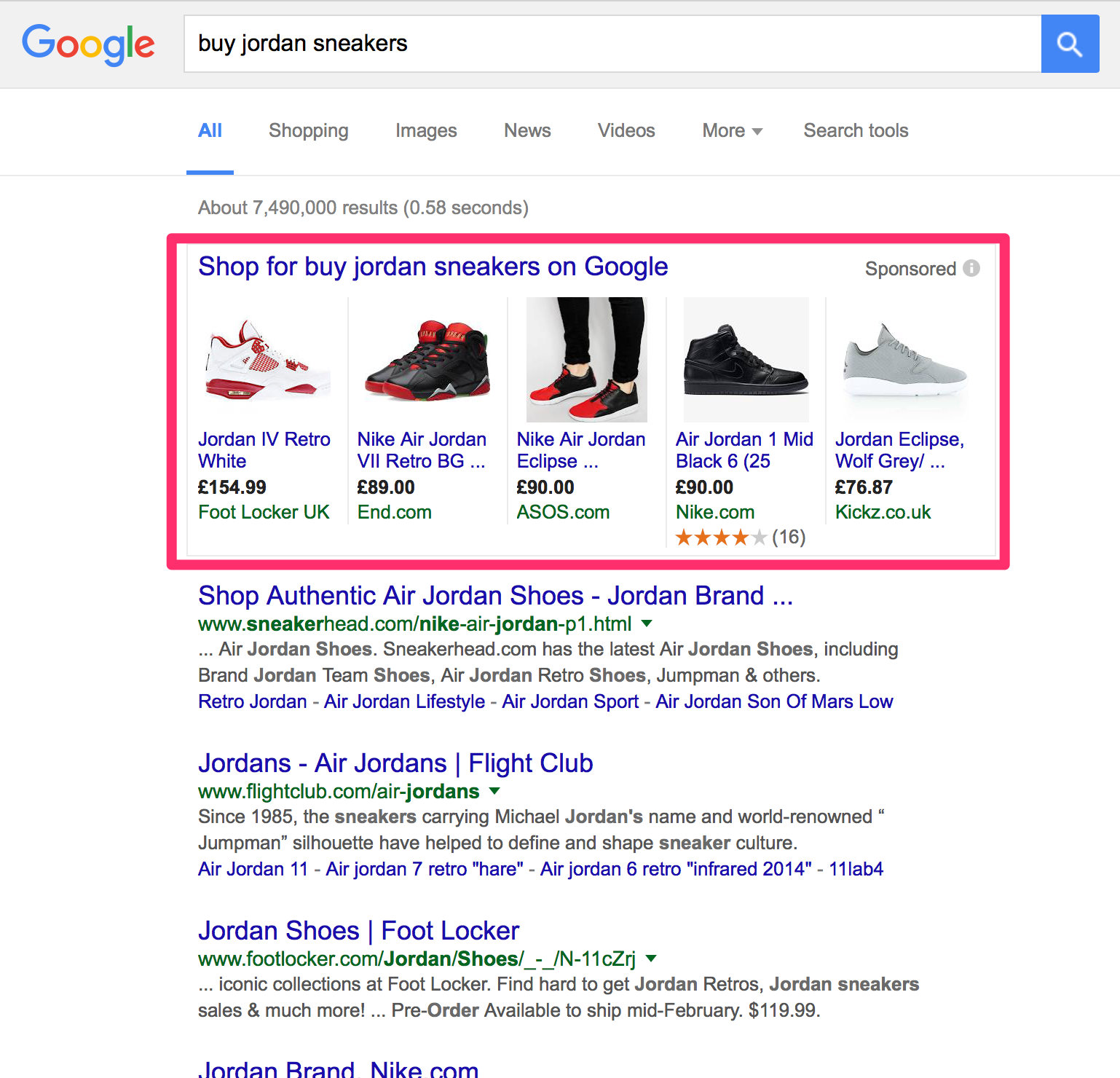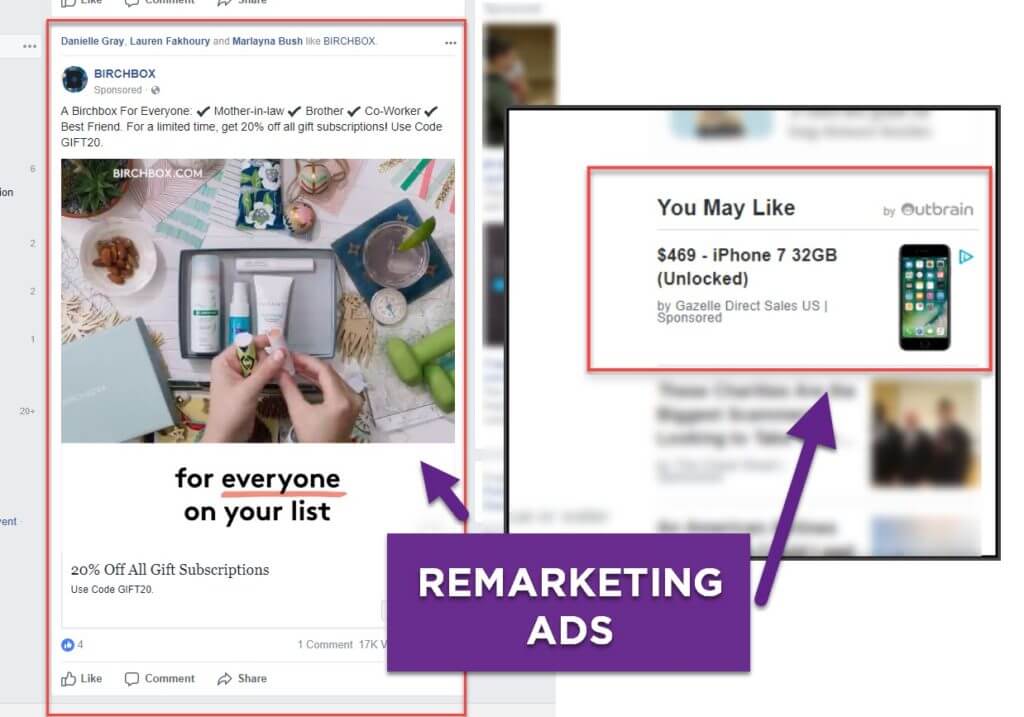When it comes to marketing, the Pay-Per-Click (PPC) advertising model has always been an effective strategy for businesses wanting to boost their online presence. Central to this model is the PPC funnel — a powerful framework that guides potential customers from their first click on an ad to the final stage of making a purchase.
But what exactly is a PPC funnel, and why is it so crucial for your digital marketing success?
In this post, we’ll look at effective strategies to maximize the potential of your PPC campaigns at every step. Whether you’re looking to attract more leads, nurture them into interested prospects or convert them into loyal customers, understanding the nuances of the PPC funnel is key.
TABLE OF CONTENTS:
Understanding the PPC Funnel: Definitions and Importance
First of all, what is a PPC funnel?
The PPC funnel is a model that represents the stages a potential customer goes through in their journey from discovering a product or service to making a purchase. It’s structured into several stages, each corresponding to a different level of customer engagement and intent.
The funnel stages typically include:
- Awareness: This is the top of the funnel where the goal is to capture the attention of potential customers. Ads at this stage are designed to introduce your brand or product to people who may not be familiar with it.
- Interest: Once you’ve captured their attention, the next stage is to build interest. Your ads and landing pages provide more detailed information about your products or services, with the goal of piquing curiosity.
- Consideration: At this stage, potential customers are considering whether your product or service meets their needs. Ads and content here are more focused on the value and benefits of what you’re offering, often showcasing more detailed information, comparisons, and testimonials.
- Intent: Here, the audience shows a clear interest in purchasing. They might engage in actions like adding a product to a cart, visiting a pricing page, or reading product reviews. Ads at this stage are more direct, often with a clear call to action (CTA).
- Conversion: This is the bottom of the funnel where the goal is to persuade the potential customer to make a purchase. Ads and landing pages are highly targeted with strong CTAs, special offers, or limited-time promotions to encourage immediate action.
- Loyalty and Advocacy: While not always included in every model, this stage focuses on turning customers into repeat buyers and brand advocates. Strategies here include retargeting ads, loyalty programs, and encouraging social shares or reviews.
Mastering the PPC funnel is much like unlocking a treasure chest of opportunities. The PPC funnel is not just a strategy, it’s more like a roadmap that navigates the complex journey of a potential customer from initial awareness to the final purchase.
That’s why each stage of the Pay-Per-Click funnel benefits from different types of ads. The ad should match the specific needs and mindset of the potential customer at that particular stage.
Here’s a breakdown of the main types of ads best suited for each stage:
- Awareness:
- Display Ads: Visual ads on websites or social media platforms that introduce your brand or product.
- Video Ads: Engaging video content on platforms like YouTube to capture attention and build brand awareness.

- Interest:
- Sponsored Content: Articles or posts on social media or blogs that provide more information about your product or service.
- Social Media Ads: Ads on platforms like Facebook or Instagram that start to engage users with interesting content.

- Consideration:
- Retargeting Ads: Ads targeted to users who have already shown interest in your product or visited your website.
- Search Ads: Targeted ads on search engines when potential customers are looking for products or services similar to yours.
- Intent:
- Dynamic Retargeting Ads: Personalized ads showing products or services users have previously viewed.
- Shopping Ads: Product listings on search engines or social media platforms, especially useful for e-commerce.

- Conversion:
- Email Marketing: Targeted emails to prospects who have shown a high level of interest, with clear calls to action.
- Remarketing Ads: Ads targeting users who have already interacted with your brand but haven’t made a purchase yet.

- Loyalty and Advocacy:
- Customer Retention Ads: Ads aimed at existing customers, such as special offers or new product announcements.
- Referral Programs: Encouraging current customers to refer new customers, often through social media or email campaigns.
Here’s a quick summary of the PPC funnel stages and corresponding ad types:

Single Grain PPC Case Study
Peet’s Coffee reached out to Single Grain to improve their PPC strategy. This client had excellent brand awareness and digital marketing campaigns, but very little presence on Google Ads. Even though they saw a return from their existing strategy, growth was still stagnant.
We optimized their campaign for different types of keywords, bid on high-ROI keywords, such as branded and product name terms, and rewrote the ad copy to fit the landing pages better and focus on the UVP of the product.
The result? Peet’s Coffee saw a 455% increase in revenue and 676% more orders, all with a 158% increase in ROAS and a reduced 72% cost per order. This was thanks to our efforts aligning searcher intent with ad copy.

Just want someone to do all this work for you? Single Grain’s PPC experts can help!👇
Top of the Funnel: Building Awareness and Attracting Leads
Now let’s navigate through the PPC funnel.
The journey through the PPC funnel begins at the top, where the primary goal is to build awareness and attract leads. This stage is critical as it sets the tone for the entire campaign.
Let’s explore the strategies and tactics that make this stage effective, and use an imagined business called GreenStride Shoes to illustrate them.
Creating Awareness: The First Step
The top of the PPC funnel is all about visibility and making a strong first impression. At this stage, the focus should be on broad-reaching campaigns that highlight the brand, product or service. The aim is to create a buzz and get your target audience talking and thinking about your offering.
Example: For GreenStride Shoes, the awareness campaign could feature a visually striking banner ad with the tagline “Step into a Greener Future.” This ad would appear on fitness blogs and environmental websites, introducing the brand’s commitment to sustainability and high-quality athletic footwear.

Targeting the Right Audience
Effective targeting is crucial at this stage. Using data-driven insights, businesses can identify and target their ideal customer profiles, ensuring that their message reaches the right people. This includes demographic targeting, interest-based targeting, and even geographic targeting.
Example: GreenStride targets environmentally conscious fitness enthusiasts. Using demographic targeting, the campaign focuses on users aged 20-40 who follow eco-friendly and fitness-related pages on social media. Geo-targeting is employed to focus on urban areas known for a high concentration of environmentally aware consumers.
Crafting Compelling Ad Content
The ad content should be engaging, informative and aligned with the interests of the target audience. This can involve catchy headlines, attractive visuals and clear, concise messaging that conveys the value proposition effectively.
Example: The ad content for GreenStride includes a short video showcasing the shoes being worn by runners in beautiful, natural settings, which emphasize the product’s eco-friendly materials. The video ends with a powerful call-to-action: “Join the Green Revolution in Fitness.”

Leveraging Multiple Channels
A multi-channel approach can amplify the reach of your campaigns. This means not just sticking to one platform but exploring various digital channels like social media, search engines, and display networks to maximize visibility.
For example, a well-known display network is the Google Display Network (GDN), which allows advertisers to place their ads in a vast range of websites across the internet that are part of Google’s network:

So in the context of our GreenStride Shoes campaign, leveraging a display network like the GDN would allow the ad to appear on various websites related to fitness, health, environmental sustainability, and even on forums and blogs that discuss eco-friendly lifestyles. This ensures that the ad reaches a diverse audience and not just those actively searching for eco-friendly running shoes, but also those who might be interested in the concept upon seeing the ad in a relevant online context.
Example: GreenStride uses a multi-channel approach by placing ads on Instagram and Facebook to leverage their strong visual platforms, and on Google Ads for broader reach. Additionally, the campaign includes sponsored content on popular running blogs and eco-friendly lifestyle websites.
Measuring and Analyzing Campaign Performance
At this stage, it’s vital to track metrics such as impressions, click-through rates and engagement. Analyzing this data helps you understand what content resonates with the audience and allows for the refinement of strategies for better results.
Example: For the GreenStride campaign, key metrics such as the number of ad impressions on social media, click-through rates on the blog posts, and engagement rates on the video ad are closely monitored. Let’s say that after the first two weeks, the data shows high engagement with the video ad. You would then increase your budget allocation to video content for the remainder of the campaign.
Here’s where we would find these metrics for our GreenStride campaign:
Ad Impressions on Social Media:
- Platforms: Facebook Ads Manager, Instagram Insights, Twitter Analytics, LinkedIn Campaign Manager.
- How to Find: These platforms provide dashboards where you can view the total number of times your ads were seen. For example, in Facebook Ads Manager, navigate to the ‘Campaigns’ tab, select your campaign, and view the ‘Impressions’ column.
Click-Through Rates on Blog Posts:
- Platforms: Google Analytics, WordPress with Jetpack plugin, other blog analytics tools.
- How to Find: In Google Analytics, go to ‘Behavior’ > ‘Site Content’ > ‘All Pages.’ Here you can see the CTR for individual pages/posts. If your blog is linked to the PPC ads, you can track the CTR of visitors coming from these ads.
Engagement Rates on Video Ads:
- Platforms: YouTube Analytics (for YouTube ads), Facebook Ads Manager (for Facebook video ads), Google Ads (for video campaigns).
- How to Find: On YouTube Analytics, you can find engagement metrics under the ‘Engagement’ tab, which shows watch time, likes, comments, and shares. Similarly, Facebook Ads Manager and Google Ads provide detailed metrics on how users interact with your video ads, including views, likes, shares, and comments.
The top of the PPC funnel, though challenging, is where you’ll set the groundwork for a successful campaign. By effectively capturing the audience’s attention here, businesses can expect a deeper engagement in the subsequent stages of the funnel.
Need help acquiring more customers predictably? Single Grain’s PPC experts can optimize your PPC funnel!👇
Middle of the Funnel: Nurturing Leads and Building Interest
After attracting attention at the top of the funnel, the next crucial phase in the PPC journey is the mid-funnel. Here, the focus shifts to nurturing leads and building deeper interest in your product or service.
This stage is key in transforming initial curiosity into genuine consideration. Here’s how to do this.
Engaging with Personalized Content
At this stage, personalized and relevant content plays a pivotal role. For GreenStride Shoes, this could involve sending targeted emails to those who clicked on the initial ad, and might feature stories about the positive environmental impact of choosing eco-friendly footwear:
- Targeted Email Example: Imagine a user named Sarah who clicked on the GreenStride ad and browsed through several shoe models on their website. A few days later, Sarah receives an email from GreenStride. The email is personalized with her name and references the models she viewed: “Hi Sarah, we noticed you were checking out our latest Eco-Run series! Did you know that each pair you choose helps save approximately 5 square meters of rainforest?”
- Content Strategy: The email includes a short, engaging story about how GreenStride’s eco-friendly materials contribute to environmental conservation. It might feature a real-life case of a rainforest area positively impacted by their sustainability efforts. This narrative not only educates Sarah about the environmental impact of her potential purchase but also connects her personal interests to the brand’s values.
- Visual and Interactive Elements: Alongside the story, the email includes high-quality images of the shoes Sarah viewed and perhaps a short video clip showing these shoes in action, highlighting their durability and style. A clear, compelling call-to-action, like “Continue your eco-friendly journey with GreenStride,” is placed at the end, leading Sarah back to the website.
A personalized and relevant approach creates a deeper connection and encourages the potential customer to move further down the funnel towards a purchase.
Retargeting Campaigns
Retargeting ads are crucial in this phase for keeping your brand top-of-mind for potential customers who have shown interest but haven’t yet made a purchase:

GreenStride can use retargeting to show ads to users who visited their website but didn’t make a purchase, reminding them of the products they viewed with:
- Specific Implementation: Using tools like Google Ads or Facebook Pixel, GreenStride can track visitors to their website. They can then create custom ads that will appear on other websites or social media platforms these visitors use. For instance, if a visitor looked at a specific model of GreenStride shoes but didn’t make a purchase, later, when they are browsing a news site or scrolling through social media, an ad featuring those exact shoes will appear. This keeps GreenStride shoes in the customer’s mind and encourages them to revisit the website.
- Personalized Messaging: The ads in this phase can include personalized messages like, “Still thinking about stepping into a greener future? Take another look at GreenStride Shoes!” This personalized approach makes the ads more relatable and compelling.
- Offer Incentives: To further entice potential customers, GreenStride could include special offers in their retargeting ads, such as a limited-time discount or free shipping. This creates a sense of urgency and provides an extra nudge towards making a purchase.
- Analytics and Optimization: Retargeting campaigns also offer valuable analytics, allowing GreenStride to track the effectiveness of their ads and make data-driven decisions. They can monitor metrics like click-through rates and conversions from these ads, enabling them to continuously refine their retargeting strategies for maximum impact.
Interactive Marketing Strategies
Interactive marketing strategies like quizzes, polls, and engaging social media posts can be highly effective in maintaining interest at the mid-funnel stage. They are not only fun and engaging for the audience, but also provide valuable insights into their preferences and behaviors.
Example: For GreenStride’s campaign, they could launch a social media quiz titled “What’s Your Running Personality?” This interactive quiz could include questions about running preferences, environmental concerns and fitness goals. Each question subtly incorporates information about the benefits of GreenStride’s eco-friendly shoes.
For instance, a question could be, “When choosing running shoes, what matters most to you?” with options like “Comfort,” “Style,” “Durability,” and “Eco-Friendliness.” Each option aligns with a unique selling point of GreenStride Shoes.
Following the quiz, participants receive personalized recommendations based on their answers, such as “As a ‘Style-Conscious Runner’, check out our sleek GreenStride series!” This not only personalizes the experience but also directly connects quiz responses to GreenStride’s product line.
Interactive content like this quiz also serves as a tool for collecting valuable data. GreenStride can analyze the responses to understand their audience better and tailor future marketing efforts accordingly. Let’s say a significant number of participants show interest in eco-friendliness, then GreenStride might focus more on highlighting their environmental initiatives in future campaigns.
Educational and Informative Content
Providing value through educational and informative content is a key strategy in building trust and nurturing leads in the mid-funnel stage. This approach goes beyond merely selling a product; it educates the audience and positions the brand as an authority in its field.
Expanding on GreenStride’s approach, in addition to blog posts and videos about the sustainable materials in their shoes, they could also develop an in-depth guide on the impact of eco-friendly practices in the footwear industry. This guide could cover topics such as:
- the carbon footprint of traditional shoe manufacturing versus eco-friendly methods
- the long-term environmental benefits of sustainable materials
- how consumers can make more environmentally responsible choices
GreenStride could also collaborate with environmental experts or influencers in the sustainability space to create content. For instance, hosting a webinar or podcast series with eco-activists or athletes who prioritize sustainability could lend credibility and depth to their content, drawing in a more engaged audience.
By effectively implementing these strategies, you nurture leads through the mid-funnel, building a stronger interest and moving potential customers closer to a purchasing decision.
Bottom of the Funnel: Converting Leads into Customers
The bottom of the PPC funnel is where the journey culminates, focusing on converting leads into actual customers. This stage is critical as it’s where the return on investment materializes.
Here are some key strategies that GreenStride might employ:
- Strong Call-to-Action (CTA): At this stage, CTAs should be clear, compelling and action-oriented. For example, GreenStride’s website and emails could feature CTAs like “Buy Now to Make a Difference” or “Get Your Eco-Friendly Shoes Today,” encouraging immediate purchase.

- Landing Page Optimization: Ensuring that the landing pages are optimized for conversions is crucial. GreenStride’s landing pages should be straightforward, with a focus on the product benefits, customer testimonials, and an easy checkout process.
- Time-Sensitive Offers: Creating a sense of urgency can motivate leads to act. GreenStride could offer limited-time discounts or exclusive offers like “30% off for the next 24 hours” to accelerate the decision-making process.
- Follow-Up Emails: Sending follow-up emails to users who have shown interest but haven’t purchased can be effective. These emails could address potential concerns or offer help in decision-making, like “Need Help Choosing the Right Shoes for You?”
- Customer Reviews and Testimonials: Featuring positive reviews and testimonials can greatly influence purchase decisions. GreenStride could highlight customer stories and feedback on their website and in emails, showcasing the satisfaction and impact of their eco-friendly shoes.
By implementing these strategies effectively, GreenStride will enhance their chances of converting interested leads into loyal customers at the bottom of the PPC funnel.
PPC Funnel Post-Conversion: Encouraging Repeat Business
You’re not done yet!
The post-conversion stage (customer retention) in the PPC funnel is as crucial as acquiring new customers. It’s about turning one-time buyers into loyal customers and advocates for your brand.
Here’s how GreenStride Shoes might approach this phase:
- Loyalty Programs: Implementing a loyalty program can incentivize repeat purchases. For instance, GreenStride can introduce a points system where customers earn points for each purchase, which can be redeemed for discounts or special offers on future buys.

- Engagement Through Email Marketing: Regular, value-adding communication through email keeps the brand in the customer’s mind. GreenStride can send newsletters featuring running tips, eco-friendly living advice, or new product launches, thus maintaining a relationship with the customer.
- Requesting Customer Feedback: Encouraging customers to provide feedback not only gives valuable insights but also makes them feel valued. GreenStride could send out a customer satisfaction survey post-purchase, potentially offering a discount on their next purchase as a thank-you.
- Personalized Recommendations: Using previous purchase data, GreenStride can send personalized product recommendations to customers. For example, a customer who bought running shoes might be interested in eco-friendly running apparel.
- Social Media Engagement: Active engagement on social media platforms helps in building a community around the brand. GreenStride can encourage customers to share their experiences and photos on social media, perhaps even featuring these posts on their official channels.
These strategies can help GreenStride not only retain customers but also turn them into brand ambassadors who spread the word about their positive experiences.
Last Word on PPC Funnel Tactics
Navigating the PPC funnel requires a specific approach at each stage. From sparking initial interest at the top of the funnel to nurturing leads in the middle and finally converting them into loyal customers by the bottom of the funnel, every step plays a vital role in the success of a PPC campaign.
The key to a successful PPC funnel lies in understanding the unique needs and behaviors of your audience at each stage.
By employing a combination of engaging content, strategic targeting and continuous optimization, businesses can not only achieve their immediate marketing goals, but also build lasting relationships with their customers.
Through our example of GreenStride’s eco-friendly running shoes, we’ve put this into practice to see how targeted strategies and personalized content can be really effective in guiding potential customers through this journey.
If you’re ready to get the maximum return on your online advertising investment, Single Grain’s PPC experts can help!👇
PPC Funnel FAQs
-
What is a funnel in PPC?
The funnel in PPC (Pay-Per-Click) refers to the structured PPC customer journey a potential buyer goes through, from initial awareness to the final purchase decision, facilitated by paid advertising campaigns.
This PPC marketing funnel is divided into different stages, from top of funnel to middle of funnel to bottom of funnel, each tailored with specific ad strategies to engage the customer at that particular point in their journey. The funnel stages typically include:
- awareness
- interest
- consideration
- intent
- conversion
Through effective funnel management, businesses aim to guide prospects through these stages, optimizing each touchpoint to improve funnel click-through rates and ultimately increase conversions.
-
What does PPC mean in marketing?
PPC stands for Pay-Per-Click, a model of internet marketing where advertisers pay a fee each time one of their ads is clicked. Essentially, it’s a way of buying visits to your site, rather than attempting to “earn” those visits organically.
PPC is a crucial part of digital marketing, allowing businesses to directly target potential customers with ads tailored to their search queries, interests or demographics. It encompasses various platforms, including search engines and social media, where advertisers can create campaigns to promote their products or services to a highly specific audience.
-
Where does PPC fit in the marketing funnel?
PPC fits across different stages of the marketing funnel, from the top, where awareness is created, down to the bottom, where decisions are made, and conversions happen. By using targeted paid advertising funnels, businesses can create tailored messages that resonate with potential customers at each stage of their journey.
For instance, at the top of the PPC funnel, the focus might be on broad keywords and general interest content to attract attention. Moving down the funnel, strategies become more refined, targeting users with higher intent through more specific keywords and compelling calls-to-action, guiding them towards conversion.
-
How does PPC work?
PPC works by allowing advertisers to place ads on platforms such as search engines and social media channels, targeting specific keywords, demographics or behaviors that align with their potential customers.
Advertisers bid on the opportunity to have their ads shown when users perform relevant searches or exhibit certain behaviors indicative of interest in a product or service. Each time a user clicks on an ad, leading them closer to a purchase or another predefined action, the advertiser pays the platform a predetermined fee.
The effectiveness of PPC campaigns is measured through metrics such as click-through rates, conversion rates, and return on ad spend (ROAS), allowing marketers to optimize their paid advertising funnel for better performance and ROI.







